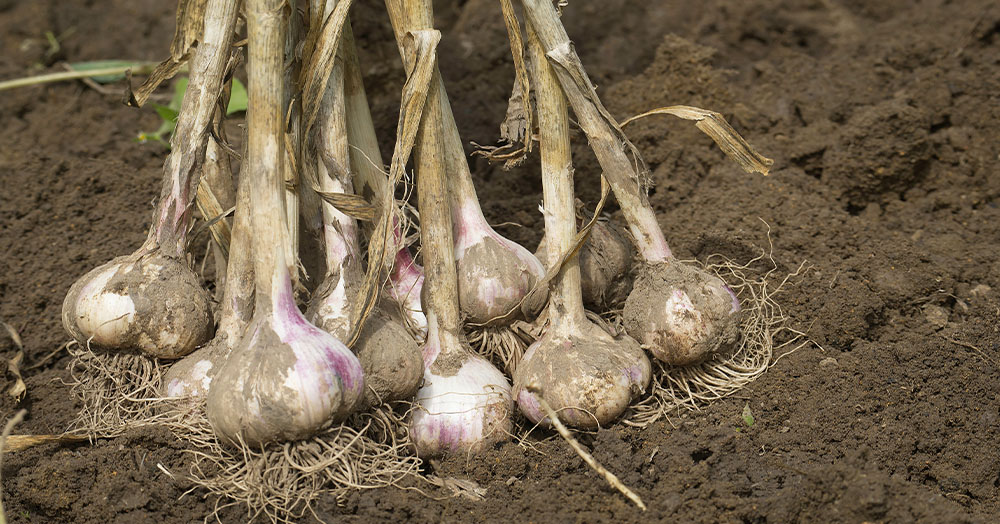Here in BC, the gardening season never truly ends—it’s just slower or busier, depending on the date. Get a leg up on your garden this year with this handy planting calendar for Powell River gardeners!
Planting Calendar for Winter
December: Apply mulch to beds and around newly planted trees and shrubs. We recommend protecting these new plantings with chicken wire or burlap during winter. Divide and replant crowded bulbs and corms. If applicable to your garden, harvest the year’s last yield of cool-weather vegetables.
January: Begin starting your cool-season veggie seeds indoors, including brassicas like cauliflower, broccoli, cabbage, and salad greens. You can also start seeds with long germination periods indoors, such as begonias and snapdragons. Prepare to apply dormant spray on your trees and shrubs.

February: Prune fruit trees while still dormant, as well as any trees and shrubs that bloom on new wood. Apply compost generously to all garden beds. Direct seed parsley, peas, and potatoes. Harden off brassicas in your cold frame.
Planting Calendar for Spring
March: You can plant a huge selection of veggies in spring! Start hardening off other cool-weather vegetables to prepare them for transplant into garden beds. Start warm-weather crops, like tomatoes, peppers, and eggplant, indoors no later than mid-month. Direct sow salad greens and root vegetables into your beds. Fertilize fruit trees and berry shrubs. If desired, plant strawberries or bareroot asparagus.

April: Direct sow hardy annuals, like sweet peas, and start transplanting new perennials, trees, and shrubs. Continue planting more cool-weather veggies to enjoy a continuous harvest later in the season, and plant summer-flowering bulbs like dahlias and gladiolus.
May: Begin hardening off warm-weather crops at the beginning of the month; by the end of the month, transplant all warm-weather crops and direct sowing vegetables that are difficult to transplant, such as melons, squash, pumpkin, and corn. You can start protecting your crops from pests and get in the habit of handpicking any suspicious-looking beetles from your young veggies.
Planting Calendar for Summer
June: Plan your fall vegetable garden and ensure you have seeds for your winter garden. Plant sweet potato slips early in the month. Direct-sow heat-loving flowers and herbs, like basil, sunflowers, nasturtiums, borage, marigolds, and fall-blooming annuals like asters. Start a consistent watering routine around nightshade crops like tomatoes and peppers, which will protect them against blossom end rot. You can water more established vegetable and perennial beds deeply once or twice weekly. Top up mulch where needed to conserve moisture. Finish off by deadheading annuals and pinching back herbs to promote healthy, bushy growth.

July: Start cool-weather crop seeds indoors again to prepare for fall planting. Continue to direct sow veggies like carrots, cucumbers, squash, beets, and turnips. Begin to harvest ripened vegetables. Pull up garlic and onions when the tops dry out and fall over. At this stage in the calendar year, managing heat and moisture is your key to success!
August: Build a cold frame using a glass pane and wood or straw bales to protect cool-season crops. Continue harvesting crops which will be ready this month, such as melons, nightshades, squash, and potatoes. Prune back raspberry canes once they stop producing, leaving 3-4 canes behind. Prepare for fall by sowing peas in your beds and continue direct sowing arugula, beets, salad greens, radishes, and turnips.
Planting Calendar for Fall
September: Start harvesting pumpkins and other gourds as they mature and store them in a cool, dry place. Continue planting salad green crops—they’ll thrive in the fall! Dig up and divide dormant spring-and-summer-flowering perennials as needed—plant garlic, perennial onions, and shallots by the end of the month. The autumn calendar months are all ideal times to improve beds with compost, manure, and other inputs.
October: Plant your spring-flowering bulbs in mid-to-late October to enjoy their beauty a few months later! Protect the bulbs with a few layers of chicken wire laid over the planting area.
November: Protect any cool-season crops you haven’t harvested yet with a layer of straw and harvest throughout the next few calendar months. Cold weather improves their flavour! You can also plant spring-flowering bulbs and garlic until the ground freezes.
A year’s worth of gardening tasks is impossible to fit into one blog post, but our planting experts can answer any questions we didn’t cover! Visit our garden centre in Powell River for more gardening tips and everything you need to succeed this year.



